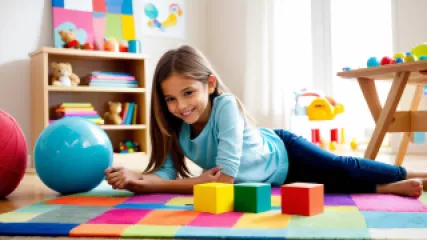The Comprehensive Guide to Anger Management for Kids in Child Psychology
Anger is a natural emotion, and it is especially common among children. However, when anger becomes overwhelming or is expressed inappropriately, it can lead to various behavioral issues. This comprehensive guide delves into the intricacies of anger management for kids within the realm of child psychology, offering valuable insights and practical strategies for parents, educators, and mental health professionals.
Understanding Anger in Children
Children experience a range of emotions as they grow, and anger is among the most intense. Understanding what triggers anger in children and how it manifests is the first step toward effective management.
Common Triggers of Anger in Kids
- Frustration: When children are unable to achieve their goals or are misunderstood, they often feel frustrated, leading to anger.
- Attention-Seeking: Sometimes, children use anger to draw attention to themselves, especially if other methods have failed.
- Fear and Anxiety: Situations that evoke fear or anxiety can also trigger anger as a defensive response.
- Environmental Factors: Stressful home environments, conflicts, and chaotic surroundings can contribute to heightened anger.
Manifestations of Anger in Children
Anger can present itself in various ways, including:
- Aggressive Behavior: Physical aggression such as hitting, kicking, or throwing objects.
- Verbal Outbursts: Shouting, screaming, and using hurtful language.
- Withdrawal: Some children may withdraw socially and emotionally when angry.
- Tantrums: Younger children often express anger through tantrums, which may involve crying, yelling, and physical resistance.
The Role of Child Psychology in Anger Management
Child psychology plays a crucial role in understanding and managing anger in children. By studying children's behaviors, thoughts, and emotions, psychologists develop strategies to help children cope with and express their anger constructively.
Cognitive-Behavioral Approaches
Cognitive-behavioral therapy (CBT) is a widely used approach in child psychology for anger management. CBT focuses on identifying and changing negative thought patterns and behaviors. Key techniques include:
- Identifying Triggers: Helping children recognize what situations or thoughts trigger their anger.
- Developing Coping Skills: Teaching children healthy ways to cope with anger, such as deep breathing and positive self-talk.
- Problem-Solving Skills: Encouraging children to find solutions to problems that make them angry.
Play Therapy
For younger children, play therapy can be an effective way to address anger issues. Through play, children can express their emotions and work through their feelings in a safe and supportive environment. Play therapists use various toys, games, and activities to help children explore their emotions and develop coping skills.
Strategies for Parents: Fostering a Healthy Parent-Child Relationship
Parents play a vital role in helping their children manage anger. Developing a strong, supportive parent-child relationship is essential for fostering emotional regulation and resilience.
Effective Communication
Open and honest communication between parents and children is crucial. Parents should listen actively to their children's concerns and validate their feelings. Some tips for effective communication include:
- Active Listening: Give your child your full attention and show empathy.
- Reflective Responses: Repeat back what your child says to show understanding.
- Non-Verbal Cues: Use eye contact, nodding, and facial expressions to convey interest and concern.
Setting Clear Boundaries and Expectations
Children need to know what behaviors are acceptable and what are not. Setting clear boundaries and expectations helps children understand the consequences of their actions and develop self-control. Here are some strategies:
- Consistent Rules: Establish consistent rules and consequences for breaking them.
- Positive Reinforcement: Reward positive behavior to encourage repetition.
- Modeling Behavior: Demonstrate appropriate ways to handle anger and frustration.
Therapeutic Interventions for School-Age Children
School-age children often face unique challenges that can contribute to anger issues. Therapeutic interventions tailored to this age group can be highly effective in managing anger and promoting emotional well-being.
Individual Therapy
Individual therapy provides a one-on-one setting where children can explore their emotions and develop coping strategies. Therapists use various techniques, including:
- Emotion Regulation Skills: Teaching children how to identify, understand, and manage their emotions.
- Social Skills Training: Helping children develop healthy social interactions and conflict resolution skills.
- Relaxation Techniques: Introducing methods such as deep breathing, progressive muscle relaxation, and visualization to reduce stress and anger.
Group Therapy
Group therapy allows children to connect with peers facing similar challenges. It provides a supportive environment for sharing experiences and learning from others. Key benefits of group therapy include:
- Peer Support: Building a sense of community and reducing feelings of isolation.
- Role-Playing: Practicing new skills through role-playing exercises.
- Feedback: Receiving constructive feedback from peers and therapists.
Exploring Virtual Therapy Options for Kids
With advancements in technology, virtual therapy for kids has become an accessible and effective option for managing anger and other emotional issues. Virtual therapy offers several advantages:
Convenience and Accessibility
Virtual therapy eliminates the need for travel and allows children to receive therapy from the comfort of their own homes. This is especially beneficial for families in remote areas or with busy schedules.
Engaging Digital Tools
Therapists can use various digital tools and interactive activities to engage children in virtual therapy sessions. These tools can include:
- Interactive Games: Games designed to teach coping skills and emotional regulation.
- Video Conferencing: Real-time video sessions that allow for face-to-face interaction with the therapist.
- Digital Journals: Online journals where children can record their thoughts and feelings.
Incorporating Anger Management Techniques into Daily Life
Teaching children how to manage their anger effectively involves incorporating various techniques into their daily routines. Here are some practical strategies:
Mindfulness and Relaxation Exercises
Mindfulness and relaxation exercises can help children calm their minds and bodies, reducing the intensity of their anger. Simple techniques include:
- Deep Breathing: Teaching children to take slow, deep breaths to relax.
- Progressive Muscle Relaxation: Guiding children through tensing and relaxing different muscle groups.
- Mindfulness Meditation: Encouraging children to focus on the present moment and observe their thoughts and feelings without judgment.
Physical Activities
Regular physical activity can help children release pent-up energy and reduce stress. Engaging in sports, dancing, or even simple outdoor play can be beneficial. Some ideas include:
- Sports: Team sports such as soccer or basketball to promote teamwork and physical fitness.
- Yoga: Yoga poses and breathing exercises to enhance relaxation and focus.
- Outdoor Play: Activities like hiking, biking, or playing at the park to encourage physical movement and exploration.
Building Emotional Intelligence in Children
Emotional intelligence (EI) is the ability to understand, manage, and express emotions effectively. Developing EI in children can significantly improve their ability to handle anger and other challenging emotions.
Teaching Emotional Awareness
Helping children recognize and label their emotions is a fundamental step in building emotional intelligence. Strategies include:
- Emotion Charts: Using visual aids to help children identify and name their emotions.
- Feeling Words: Expanding children's emotional vocabulary with words such as "frustrated," "disappointed," and "excited."
- Reflection: Encouraging children to reflect on their feelings and discuss what caused them.
Empathy and Perspective-Taking
Developing empathy and understanding others' perspectives can help children navigate social interactions and manage conflicts. Techniques include:
- Role-Playing: Practicing empathy through role-playing scenarios.
- Storytelling: Reading stories that highlight characters' emotions and discussing their feelings.
- Discussion: Talking about real-life situations and exploring how others might feel in those circumstances.
Parental Self-Care: Supporting Your Child's Emotional Growth
Parents need to prioritize self-care to effectively support their children's emotional growth. Taking care of one's own mental and emotional well-being enables parents to be more patient, empathetic, and responsive.
Managing Parental Stress
Parental stress can impact a child's emotional development. Strategies for managing stress include:
- Mindfulness Practices: Incorporating mindfulness exercises into daily routines.
- Healthy Lifestyle: Maintaining a balanced diet, regular exercise, and sufficient sleep.
- Support Networks: Seeking support from friends, family, or support groups.
Modeling Healthy Emotional Expression
Children learn by observing their parents. Modeling healthy ways to express and manage emotions can set a positive example for children. Tips include:
- Open Communication: Sharing your feelings with your child and discussing how you handle them.
- Problem-Solving: Demonstrating constructive ways to address challenges and conflicts.
- Self-Compassion: Showing kindness to yourself and teaching your child the importance of self-compassion.
Conclusion: Nurturing Resilient and Emotionally Intelligent Children
Managing anger in children requires a comprehensive approach that encompasses understanding, therapeutic interventions, parenting strategies, and self-care. By fostering a supportive environment and equipping children with the necessary skills, we can help them navigate their emotions and develop resilience.
Remember, every child is unique, and what works for one may not work for another. Being patient, consistent, and empathetic is key. As we guide our children through their emotional journeys, we contribute to their overall well-being and lay the foundation for a healthier, happier future.
Ultimately, the goal is to empower children to understand and manage their emotions, build strong relationships, and thrive in all aspects of life. With the right tools and support, children can learn to handle anger in a constructive way, paving the way for a brighter and more emotionally balanced future.






